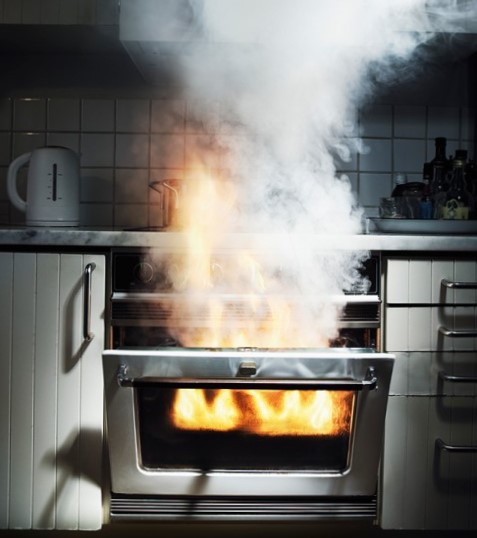A burned dinner isn’t the worst thing that can happen when you’re cooking. Kitchen fires are the leading cause of home fires. According to the NFPA, U.S. fire departments respond to 172,900 home fires involving cooking equipment each year on average. You can avoid a disaster by knowing how to prevent and put out kitchen fires.
Pay Attention
The NFPA says that unattended cooking is the leading cause of kitchen fires, accounting for 31% of kitchen fires as well as 53% of the associated deaths and 44% of the associated injuries.
- Never leave the stove on unattended. If you have to leave the kitchen, ask someone else to watch the stove or turn the heat off.
- If you are cooking something in the oven, keep a close eye on it. Set a timer and make sure you will be able to hear it go off. Don’t take a nap or leave the house while you are cooking.
Keep Your Cooking Space Tidy
The NFPA says that something was too close to the cooking equipment in 9% of cooking fires.
- Towels, paper towels, oven mitts, kitchen utensils, food packaging and other items can create a fire hazard. Keep the area around your stove clear.
- Grease buildup can also create a fire hazard. Clean your stove and oven regularly.
Remember Safety First
If a fire starts in your kitchen, safety must be the top priority. According to the NFPA, more than half of the civilians who are injured in kitchen fires are hurt while trying to put out the fire themselves.
- If you are in danger, get out!
- Close the door behind you when you leave, as this can help contain the fire.
- Call 911.
Sometimes, you may be able to put out a small fire safely before it becomes a big problem. Here are some techniques to know:
- Many kitchen fires start on the stovetop. Have a lid ready so you can smother any flames quickly.
- If a fire starts in your oven, keep the door closed to help contain the fire.
- Whether the fire occurs on the stovetop or in the oven, turn the heat off.
- Do NOT try to put out a grease fire with water. This can actually cause the fire to spread.
- Baking soda can be used to put out small cooking fires, according to the S. Consumer Product Safety Commission. Be careful, though – other substances might make the fire worse.
- A Class B fire extinguisher can be used to put out grease fires if other methods don’t work. Store a Class B fire extinguisher in the kitchen, and make sure you know how to use the A.S.S. technique.
Maintain Fire Extinguishers and Fire Alarms
- Fire extinguishers typically last between five and 15 years. Check to see if your fire extinguisher has an expiration date and check with the manufacturer to learn more about the expected maintenance and longevity of your extinguisher.
- Make sure the fire alarms in your home are working. Test your smoke detectors every month and replace the batteries twice a year.
Kitchen fires happen more frequently than you might expect. Don’t become part of these statistics. Share these kitchen fire prevention and containment tips with everyone in your household.

